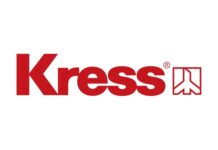Last month, I interviewed Daniel Klotz and Maddie Gargano from YDOP about Google AdWords. In part one, Daniel and Maddie discussed what Google AdWords are and how they may benefit a lawn care and landscape operator. Read part one here.
In part two, Daniel and Maddie discuss how Google AdWords work, from choosing the right keywords to setting up keywords to garner more click-thrus.
Q: How do Google AdWords work?
Daniel: For search ads, you pay when—and only when—your ad is clicked. For display (banner) ads, you typically pay a set amount per thousand times your ad is viewed. In both cases, Google charges your credit card after the fact, usually multiple times throughout each month.
Prices are set in real time through auction-style bidding. So, how much you pay is entirely set by how many other advertisers are willing to pay for the same ad space that you are, and on how much they are willing to pay compared to what you are willing to pay.
Google strongly factors in the quality and relevance of your ads. If your ad is high quality, relevant to the user’s intention and gives the user a good experience, you will get better pricing from Google than other advertisers who are not as careful and intentional with their advertising.
Maddie: The structure of AdWords includes one main account, and within the account are campaigns (each with its own budget and settings determining where the ad can appear) and Ad groups (each containing a set of ads and keywords that a business would like to prompt the ads to show for a customer’s search). The keywords that the business decides on determines which ads are shown to people searching for words/phrases relevant to a business’s service. AdWords also includes location, demographic settings, language targeting and device targeting (reaching consumers by either mobile phones, tablets or desktops) to allow the advertiser an assortment of options when targeting a certain audience for their ad.
Text ads are the simplest version of online ads provided by AdWords, and are composed of a headline, two description lines and a display URL. The headline usually uses one of the keywords chosen and is a larger font than the display URL or description lines.
AdWords allow advertisers control over their own costs and there is no minimum amount that a business has to spend. To begin, an advertiser typically sets a daily budget limit, runs a campaign for a few weeks and then evaluates that campaign’s success. To calculate the average amount to budget per day with AdWords, a business takes their monthly advertising budget and divides that by the number of days in the month. AdWords will show your ads throughout the day until it is clicked enough day that your daily budget is met. A daily budget can be as low as $5 and has no upper limit. A bidding system is also in place for keywords. Certain keywords are more expensive than others, depending on competition in your targeted area. For an ad to be shown at the top of the first search page, you set a maximum bid that is greater than that of the competition. The bid amounts fluctuate constantly.
Q: How do Google AdWords work as far as setting up keyphrases?
Daniel: With Google ads, you get to first set where you want your ads to show (geographically) as well as when you want them to show (time of day and day of week). Once you have set those parameters, the way you control when your ads appear to Google users is through what we call keyword targeting. Google offers lots of sophisticated methods that we use to control when our clients’ ads are shown. For example, using the options that Google AdWords provides, we can choose for our ads to show when someone searches “lawn care company” or “lawn care companies near me,” but not when they search “lawn mowing companies,” “cheapest lawn care company” or “how to start a lawn care company.”
Maddie: Google AdWords provides us with a helpful tool named the Keyword Planner. This program helps us discover keywords and ad group ideas. It also enables advertisers to identify keywords that may perform well based on search volume and competition. The keyword tool is also helpful in providing variations of a keyword that the business would like to use, in addition to relevant search terms that could be implemented within a campaign. For instance, a lawn care provider might want to use the keyword “lawn care service,” but in addition, could also use “summer lawn care services” or “local lawn care maintenance.”
When searching for keywords for your account, the keywords should be relevant to the business, and tie in well with the ads created. They also shouldn’t be too general, and instead, more specific to the services offered. AdWords also uses matching options for keywords, labeled as (broad, phrase, exact and negative) match. Many people don’t realize that just as important as your target keywords are your negative keywords—words like “free” or “jobs” that, if included in the user’s search, tell Google not to display your ad, because they’re not your target customer.
Q: What do you pair Google AdWords with?
Daniel: The most common use of Google AdWords takes the user to a landing page with a clear call to action. In e-commerce, that call to action is to buy a product. For a lawn care or landscape business, the call to action is typically to request more information, either by completing a form or by making a phone call.
The downside to this most common use of AdWords is that clicks are expensive. It is not unusual to pay more than $10 for each click, especially during peak months in the spring. So, there are alternative ways to use AdWords. For example, instead of targeting searches like “lawn care companies near me,” where you might be paying $12 per click, you can target searches like “what kind of grass is best for croquet,” where you might be able to pay as little as 50 cents for a click. The difference between the two searches is that the second one is much further away from becoming a warm lead—that searcher is higher up the sales funnel. It’s cheaper because it’s much less competitive. It also requires you to have content written about it, such as a blog post or even a downloadable white paper.
In addition to enabling advertisers to run pay-per-click search advertisements, Google AdWords also provides advertisers with powerful tools to run online display advertising (banner ads) campaigns and to promote videos on YouTube. Display advertising can be targeted in many ways, including demographically, and is typically priced by how many thousand people see the ad. Because even a very highly targeted display campaign commonly costs less than $5 per thousand views, Google display ads are an affordable way to build awareness, but it usually takes a thousand views to get even one or two users to actually click your ad and visit your website. Right now, YouTube ads are one of the best deals in advertising: you can pay as little as 10 cents for each time your video is viewed. Getting 1,000 people in your highly specific target audience to watch your video by spending just $100 soundly beats TV advertising rates.
As you can see, Google AdWords offer you a variety of choices. Do you think Google AdWords will add more prospects to your sales funnel? Next month, Daniel and Maddie will discuss why an Internet marketing company is the best route to manage your Google AdWords campaign.











![[VIDEO] Dickies®: Discover Workwear That’s Anything But Uniform](https://turfmagazine.com/wp-content/uploads/2023/06/1647663814-4b1a2a7742790a9b1e97a3b963477850192e1d6a9dfba9b07214a77bae25d6e3-d-218x150.jpg)



























![[VIDEO] Dickies®: Discover Workwear That’s Anything But Uniform](https://turfmagazine.com/wp-content/uploads/2023/06/1647663814-4b1a2a7742790a9b1e97a3b963477850192e1d6a9dfba9b07214a77bae25d6e3-d-324x160.jpg)